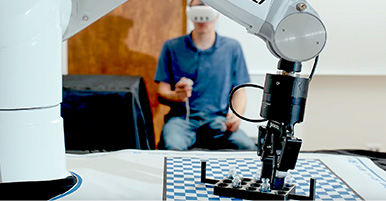
A lot has changed since 1994. Back then, if you asked people what autism was, most would scratch their heads and respond, “You mean like that character in the movie Rain Man?”
Ask the question in 2013 and you’re likely to find that many more Americans have not only heard of autism, but may be personally affected by it. This shift in awareness aligns with recent findings from the Center for Disease Control (CDC) indicating that one in 88 American children have autism. This is an astonishing rise of more than 78 percent since 2000, when CDC first tracked autism.
So when it came time for the American Psychiatric Association to revamp its diagnostic bible, the Diagnostic and Statistical Manual, which had not undergone major revisions since 1994, it’s not surprising that one of its most significant changes targets the diagnosis of autism. Specifically, the latest edition, DSM-5, folds together previously disparate diagnoses –Autism Disorder, Asperger’s Disorder, Pervasive Developmental Disorder-Not Otherwise Specified (PDD-NOS), and Childhood Disintegrative Disorder –into one umbrella term: Autism Spectrum Disorder (ASD).
The implications of a DSM-5 ASD diagnosis are significant. Used by mental health professionals to diagnose a host of psychiatric disorders, the DSM-5 can substantially influence a person’s eligibility for disability-related services and accommodations, including the likelihood of school-age children and youth receiving special educational services and supports.
While not endorsing or refuting the DSM-5’s new diagnosis of ASD, my fellow disability researchers in SRI’s Center for Education and Human Services and I hope that a more individualized diagnostic approach will help to identify appropriate services and supports to meet the needs of individuals with ASD.
Studies led by Cornell University and preliminary studies sponsored by autism advocacy groups suggest that a broad ASD definition will not decrease the number of autism cases that are diagnosed. In fact, it may actually increase the sensitivity and clarity of clinicians’ diagnoses because they must now consider the needs, symptoms, and severity of each patient diagnosed with ASD, rather than attempting to interpret symptoms so that they align with one type of autism-related disorder over another (e.g., Asperger’s versus PDD-NOS).
Looking at specific services and support programs that promote successful outcomes for people with autism is an important part of my research team’s work.
A recent SRI study conducted by our team analyzed the strengths and weaknesses in mathematics and reading of students with ASD alongside measures of their cognitive functioning. This study revealed several distinct academic profiles, including those with hypercalculia (superior arithmetic skills relative to intelligence) and hyperlexia (superior word recognition but poor reading comprehension). These findings underscore how important it is for educators and service providers to focus on academic strengths and weaknesses that are particular to children with ASD.
Another SRI study identified the types of school-based support services and accommodations received from preschool through high school. It revealed very distinct patterns: although services were readily provided to almost all elementary-aged students with ASD, only students with the most severe ASD symptoms received a similar level of services in high school. Speech and communication therapies were the most commonly provided across the age span, yet behavioral, mental health, and academic-related services were not readily available to elementary-aged students, and even less so among high school students with ASD.
Other ongoing studies are considering the individual symptoms and needs of children with ASD and how school-based services can address them. These studies focus on issues such as self-efficacy, family involvement, and other factors that may play a pivotal role in determining whether a child with ASD will grow up to be an adult that is disconnected and struggling to achieve independence or one that has successfully transitioned into a fulfilling adult life.
There is still much to learn about the individual characteristics, strengths, and needs of children and youth with ASD. Although honing in on a more accurate ASD diagnosis is a critical first step, learning how to best serve people with ASD so that their social, behavioral, and academic needs are fully met is the next critical juncture in ensuring that this growing population can reach its full potential.


